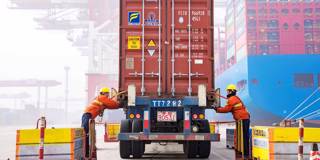In the period leading up to the 2008 financial crisis, global value chains expanded rapidly, eventually accounting for around 70% of international trade. But in the years since, GVCs have stagnated and declined slightly in importance – and are set to undergo a massive reconfiguration in the coming decade.
LONDON – For more than a decade, China has been haunted by the prospect of getting stuck at an income level below that of the developed world (the “middle-income trap”). But the country’s economy is well on its way to eliminating this fear: growth has been faster, and driven by more innovation, than in most other middle-income countries. And yet, a key aspect of China’s growth model, the economy’s integration into global value chains, is now being undermined from several directions. How China responds to this challenge will shape the speed and nature of its own growth and that of the global economy.

LONDON – For more than a decade, China has been haunted by the prospect of getting stuck at an income level below that of the developed world (the “middle-income trap”). But the country’s economy is well on its way to eliminating this fear: growth has been faster, and driven by more innovation, than in most other middle-income countries. And yet, a key aspect of China’s growth model, the economy’s integration into global value chains, is now being undermined from several directions. How China responds to this challenge will shape the speed and nature of its own growth and that of the global economy.